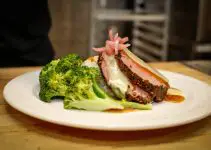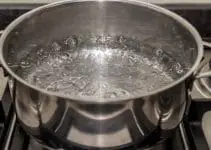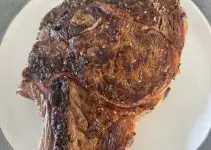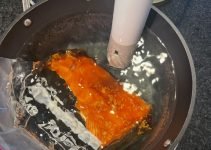When referring to the cooking method of poaching, most people think of poached eggs. However, there are a lot of foods that taste wonderful when poached. Sous vide cooking and poaching share some of the same characteristics, but aren’t identical.
What is Poaching
Poaching refers to the act of cooking food in gently simmering liquid, usually 140-180 degrees. Traditionally, water or the cooking liquid is brought to temperature prior to adding the food. Alternatively, food can be added when the water is still cold; this is called cold-poaching, and works wonderfully for delicate foods like shrimp. Cold poaching prevents overcooking and loss of liquid from inside of the food, rendering a piece of salmon tender, moist, and, most importantly, not tough or dried out.
Poaching was originally intended for rendering tough meats more tender, and was first documented by the Romans, although one article suggests that the method of poaching goes back ten thousand years.1 It was not until the late 1800s that poaching became the center of fine dining, when the chef of Delmonico’s in New York City published his cookbook “The Epicurean”. Poaching continued as a sophisticated cooking method throughout the 1960s, when it then became a way to cook food that tasted great and was healthy.
Poaching is not always reserved for savory foods, though. Fruits like apples and pears are commonly poached in cider or champagne, and make for simple yet elegant desserts.
Liquids commonly used for poaching include water, vinegar, broth or stock, wine, or vegetable juice. Adding aromatics like herbs, citrus, and spices helps to prevent a bland dish by infusing the food and also the liquid, making for a great base that can be reduced to a luxurious sauce, served as an accompaniment.
There are also pieces of cookware that are specifically used for poaching; for instance, a poacher is an oblong pan with a rack that makes poaching a whole fish much easier. Egg poachers have space for individual eggs, preventing the mess and frustration that can come with poaching eggs freehand. Finally, there is a smaller poaching dish called a sauteuse.
Sous vide cooking vs. poaching
- Sous vide cooking doesn’t require multiple dishes; rather, a sous vide circulator can be used in any heat-proof cooking vessel or food safe container.
- Poaching is done on the stove, over low heat, with a wider temperature variation, while sous vide cooking continuously circulates water, heating it to a specific, pre-set temperature. Sous vide cooking can be done on any heat-safe surface.
- Sous vide cooking occurs at lower temperatures than poaching, usually around 130-140 degrees.
- The food is sealed in a bag or vacuum package, whereas poached foods are not sealed, and come in direct contact with the cooking liquid.
- Sous vide cooking also completely submerges the food, while poaching is usually done with less liquid; part of poaching comes from continuously spoon liquid over the food that is cooking.
- Sous vide cooking can only be done with water, as the circulator could get damaged from other liquids running through it; however, a sous vide cooker (which looks like a large bread machine or fryer) could possibly be used to simulate poaching. Check out the article that we wrote to learn more about circulators and machines.
- Some foods like eggs work wonderfully in a sous vide, and have a texture very similar to poached eggs; they are also less mess, as they are cooked in the shell. However, it does take much longer to sous vide eggs than poach them.
- Poached foods are often served with a sauce or reduction made from the cooking liquid, cutting back on waste; because sous vide cooking is done under vacuum, there is no broth from which to make a sauce. Additionally, there is usually a lot of water that is left behind after sous vide.
Sous vide cooking and poaching are very similar; both are gentle ways to cook fruit, fish, meat, eggs, or vegetables. They can both produce high quality, delicious tasting, perfectly cooked foods. Both have a place in the kitchen. Questions/comments/feedback? Contact me and let me know your thoughts!
Contributor:
This article was written by Stephanie Searor, MS RD LDN
Reference:






